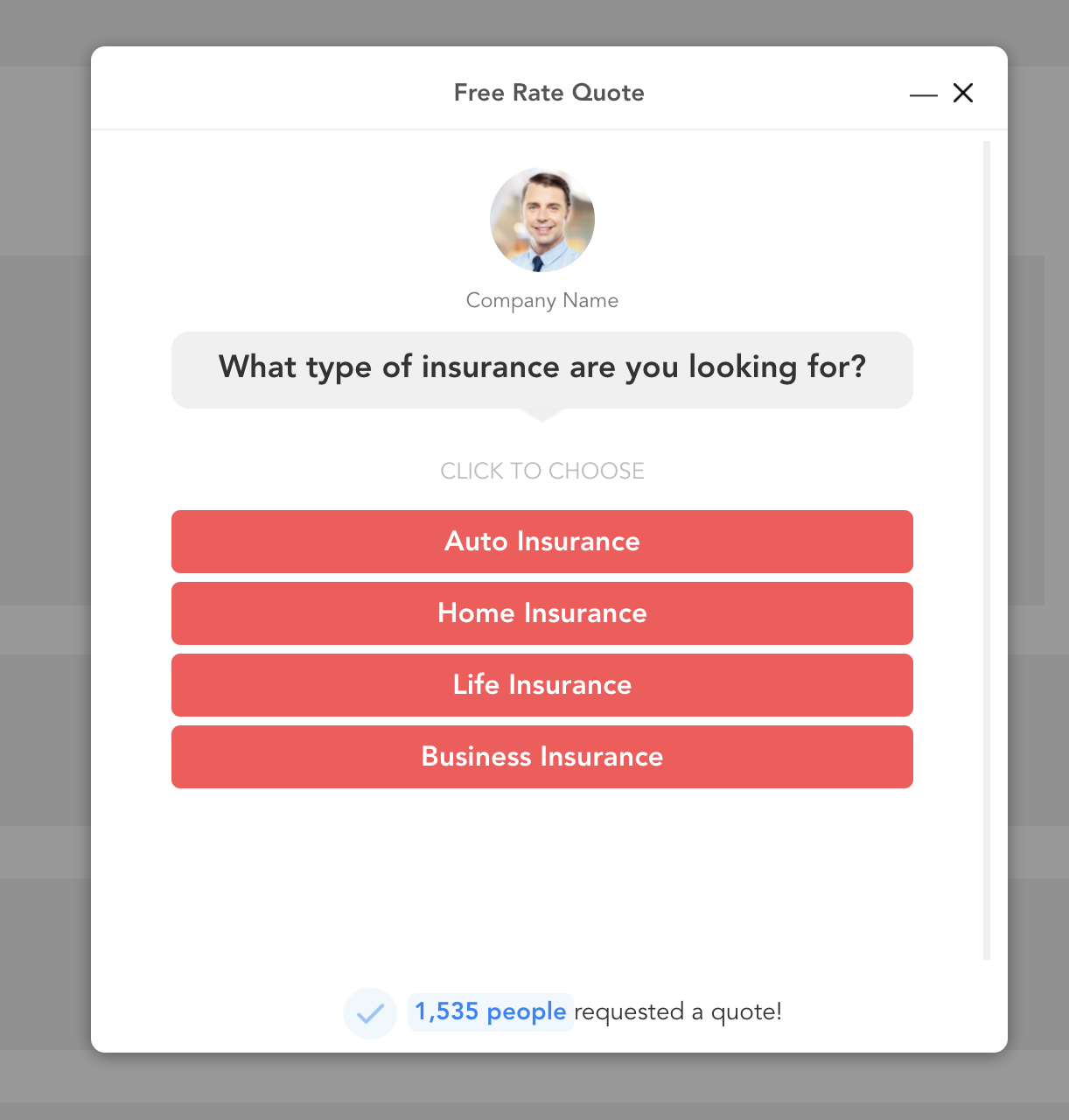
If you’re looking to capture more qualified inbound leads, then conversational forms might just be the tool for you.
At GetLeadForms, we’ve re-invented the LeadForm to make it more friendly, more dynamic, and more conversational than ever before.
This means more and better leads for you.
In this blog post, I’m going to tell you everything that you need to know about Conversational LeadForms and why you need to add a Conversational Form on your website, landing pages, and in your funnels.
Before, I get into what a Conversational Lead Form is and why you should use one on your website, let’s start with the basics.
What’s a Conversational LeadForm?
A Conversational Form is exactly how it sounds.
It’s a more friendly, conversational approach to forms.
Simply put, rather than the standard approach to forms where all of the questions are listed out in one step, the Conversational Forms breaks the form up, asking one question at a time in a conversational style. This is a great way to reduce form abandonment.
Here’s an example.
Conversational Forms Vs Ordinary Forms
The widget below does a great job of illustrating the difference. Simply drag the slider to the right to see an ordinary form and to the left to see the same form setup as a Conversational LeadForm.
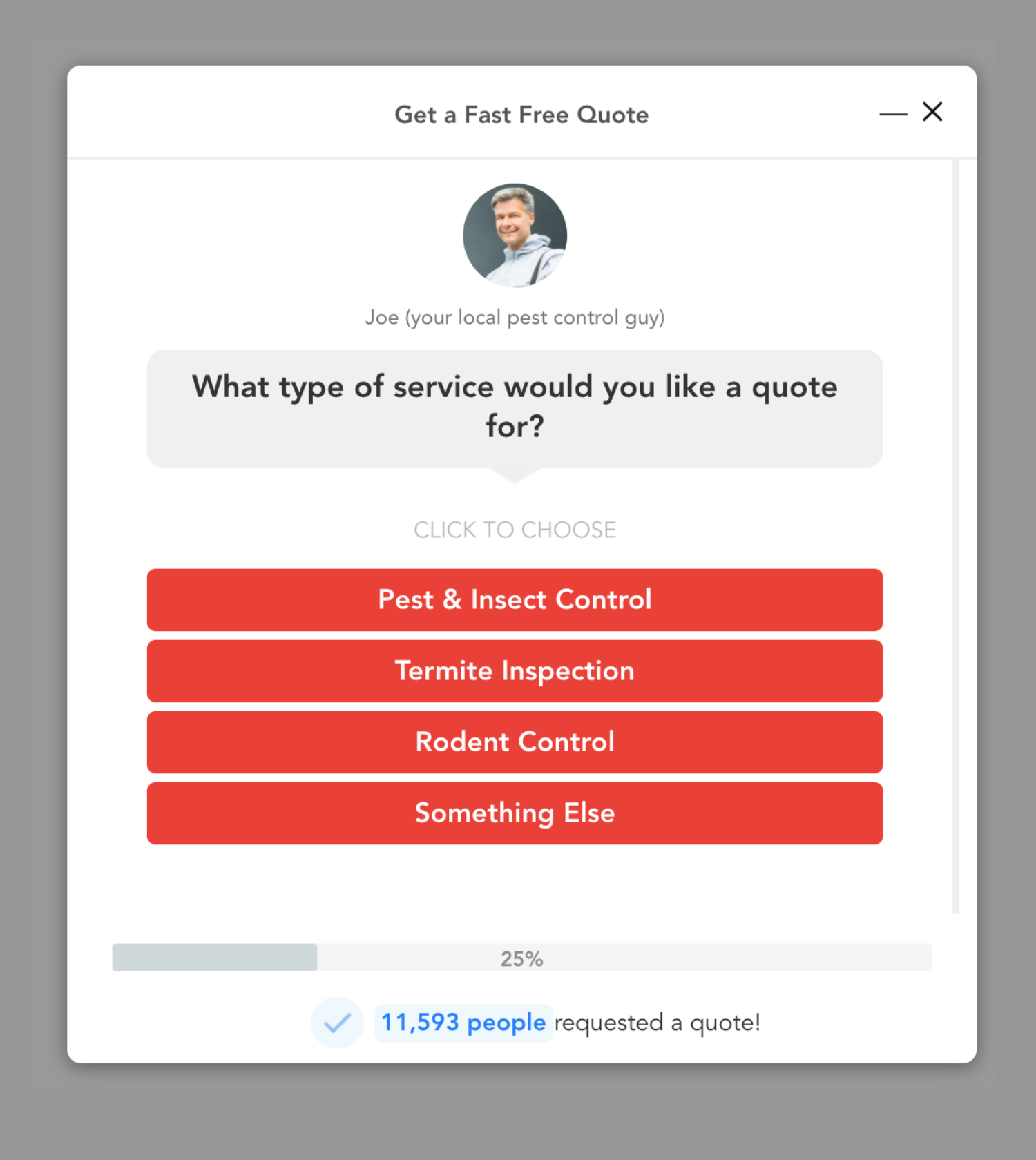

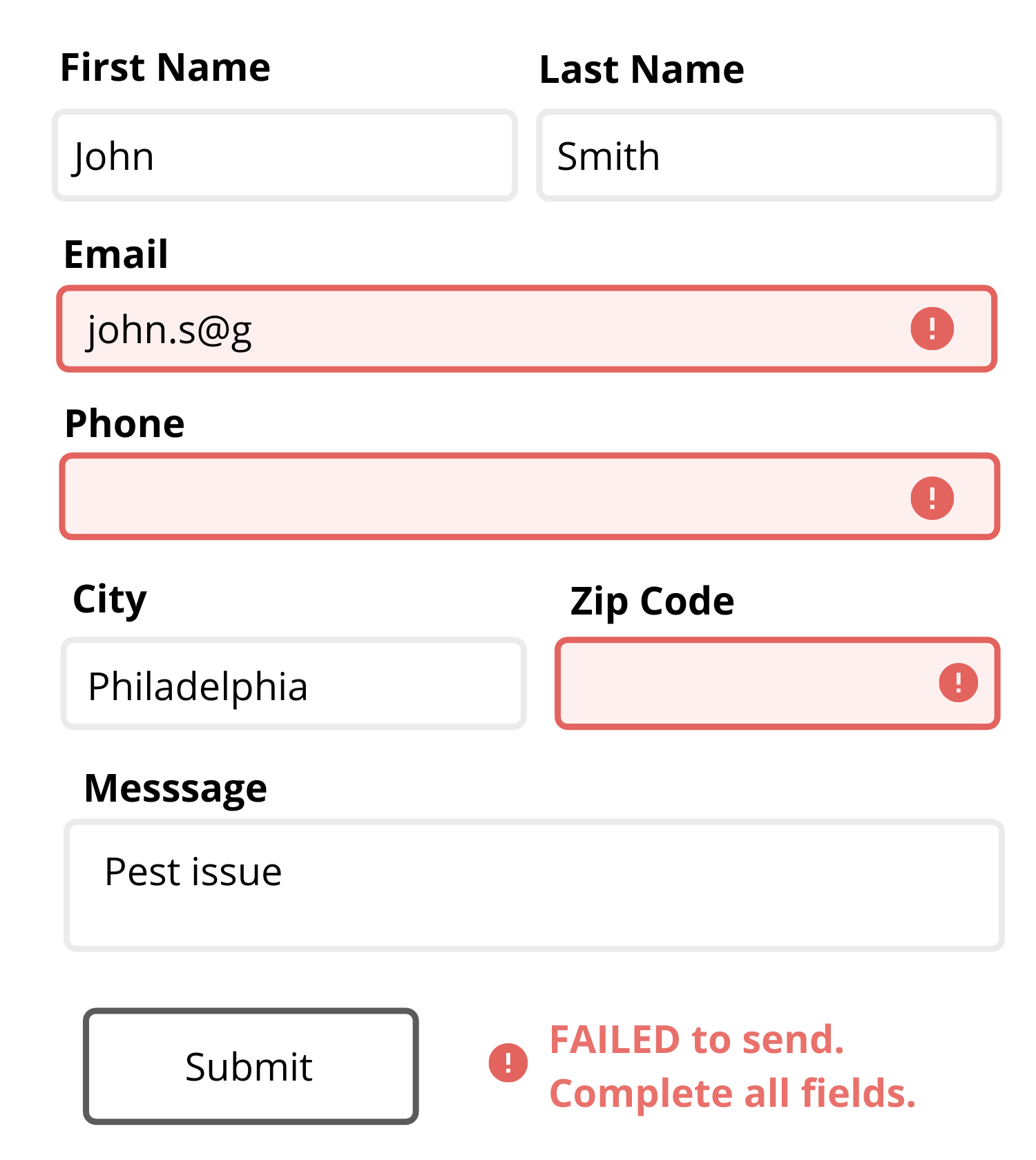
After testing Conversational LeadForms across millions upon millions of sessions and seeing it work across dozens of industries from local service to SaaS, I can say for sure that Conversational Forms are far more effective than ordinary, classic forms. I’ll show you why throughout this post.
Before we dive into some examples and why you should add a Conversational LeadForm to your website, I want to tell you my story and why I even created this tool in the first place.
My Story — how I stumbled upon the idea of Conversational LeadForms
This whole concept of Conversational Forms came together by accident.
It all started for me on a rainy night in September in 2019.
I was sitting at my desk thinking about ways to help one of my clients increase leads.
The client was a service business that was getting traffic to their website via inbound channels (PPC, SEO, social, etc).
Getting the traffic to the client’s site wasn’t really the issue.
They wanted more leads.
And the client wanted better leads too.
When reviewing the client’s website looking for ways to increase leads, I realized one of the biggest leaks in the client’s funnel was their forms.

Basically, it boiled down to three major problems:
Problem #1: Their form was buried on a contact us page somewhere, meaning that the website visitor had to go and find the form in the first place.
Problem #2: When the prospect did go to the ‘Contact Us’ page there was a high bounce rate and they simply were just not completing the form at a high enough rate. Like most forms, it had a pretty low conversion rate.
Problem #3: The form only asked a handful of questions, like name and contact info — making it hard to even generate data rich leads to begin with
That’s when I had an ah-ha moment!
I realized that if I could optimize the form, then I could easily get the client more and better leads.
Let’s just do the math real quick.
Let’s say at the time that the client was getting 5,000 visits to their website per month and 5% were converting into leads.
That’s roughly 250 leads per month.
Now imagine if you take that conversion rate from 5% to 8% simply by optimizing the lead form.
Now you’re getting 400 leads per month from the SAME 5,000 visits.
That’s a 60% increase in leads simply by optimizing just one part of the funnel.
Not only that, but it makes the ROI across all marketing so much better. Suddenly, the leads are coming in at a cheaper cost, the leads are better, the close rate is higher, etc.
So it was apparent to me that rather than launching a new PPC campaign or increasing budget, I needed to spend some time optimizing the form to increase the form completion rate.
But the big question for me — where to even start?
I couldn’t just tweak the form, I needed to think BIGGER
If you ask any marketer to optimize a lead form then they’ll probably start with the standard approach that everyone takes: remove the fields, adjust the layout, A/B the CTA copy, etc…
Sure, I could have went in that direction.
But I knew that I would only get marginal gains at best.
I wanted MASSIVE gains.
I knew that I had to think outside the box and do something a little dramatic to the client’s lead form.
One of my favorite quotes goes something like this:
“If You Always Do What You’ve Always Done, You’ll Always Get What You’ve Always Got.” – Henry Ford

I knew I needed to do something different.
So I sat down and put pen to paper.
To optimize the LeadForm I knew that I needed to make it:
1) More engaging: This means designing the form in a way to capture more information while holding the prospect’s attention for longer
2) More accessible: This means creating a lead form that can be easily accessed across any page, rather than waiting for the visitor to click-through to some contact us page
3) More friendly: This means building trust through the form to make prospects more comfortable with giving their personal information away
Based on the above characteristics, I was able to sketch out the concept below:
Here’s the prototype of the first Conversational LeadForm

The general idea was this:
- Re-invent the LeadForm and give it an entirely new look by making it look and feel more personal. Notice the use of the image and how the question is added into a chat bubble
- Make the form work like a multi step form to get more information about the lead
- Bring in other elements like real-time social proof and various UX/UI improvements that you typically don’t see with most forms
And to make the for more accessible, I borrowed the concept that chatbots use — which is a tiny welcome message in the bottom right or left hand corner of the screen. However, the difference being that when clicked, it opens up the lead form.

After sketching out the concept I found a developer and got to work.
Within a pretty short amount of time, I had a proof of concept up and it was added to the client’s landing page.
Like a kid before the first day of school, I was nervous and excited all at the same time about this new idea for more conversational, interactive forms.

Rather than doing the same old thing and getting the same results, I made a pretty big bet on building a different type of form.
And the results paid off. The Conversational Form worked great!
My client’s form conversion rate went from 3% to 9%. And he started getting, data rich leads like this:
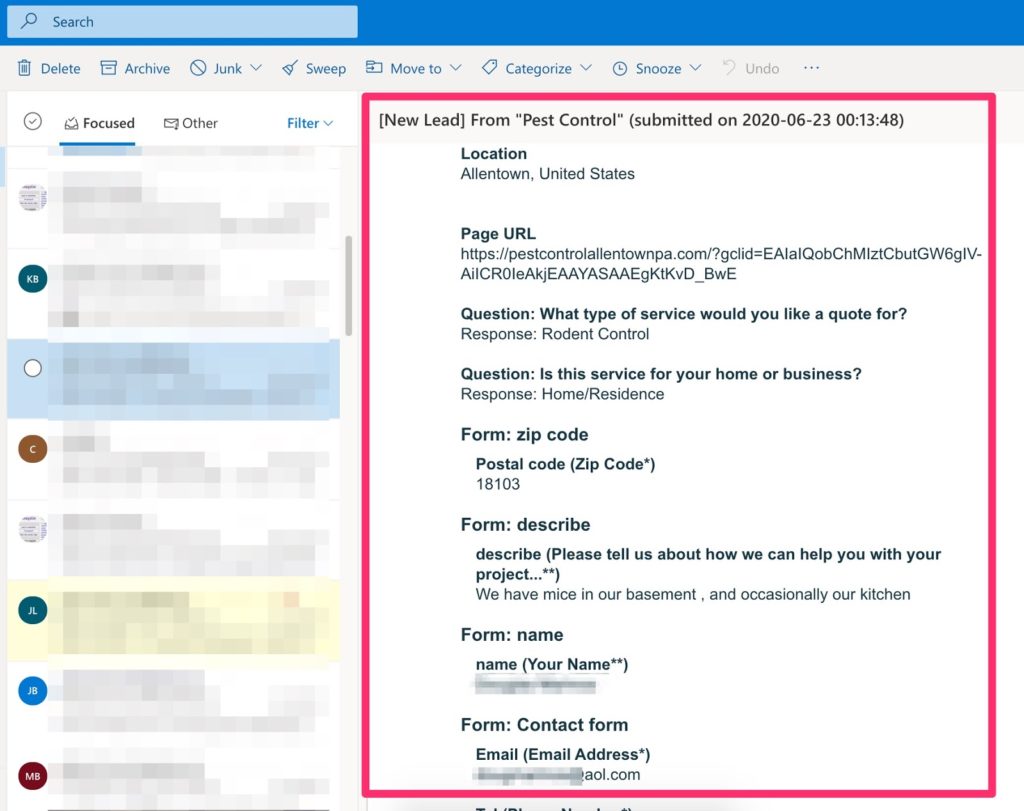
After seeing just how effective the Conversational LeadForm tool that I built was, I knew I had something.
And I knew that I had to start sharing it with other marketers and business owners.
And despite having absolutely no desire to get into the super saturated form market, I knew that I had something unique and different enough that could cut through the noise.
And that’s the story of how the concept for of the Conversational LeadForm came to life.
Now that you know the story, let’s take a look at some examples of Conversational LeadForms.
Examples of Conversational Forms
When it comes to the look and feel of your Conversational LeadForm, there are a few directions that you can take it.
This is our primary style of Conversational LeadForm.
You can see it in action here.
The above style is what you’ve seen throughout most of the blog post and this is the style that I personally stick with, just because it’s so easy to setup and is so different than most of what’s out there.
And the whole form looks and feels more friendly too.
Here’s another example of a Conversational LeadForm for an auto dealer:

The above form has some conditional logic which takes the user down different paths depending upon their needs. We’ve seen that using forms like this for auto dealers can really go a long way in boosting conversions. You can see a template here.
You can even create what I like to call a Click-Through Conversational LeadForm. This style of form doesn’t necessarily capture lead info, instead it drives prospects deeper into your funnel. Here’s an example, from the GetLeadForms site.
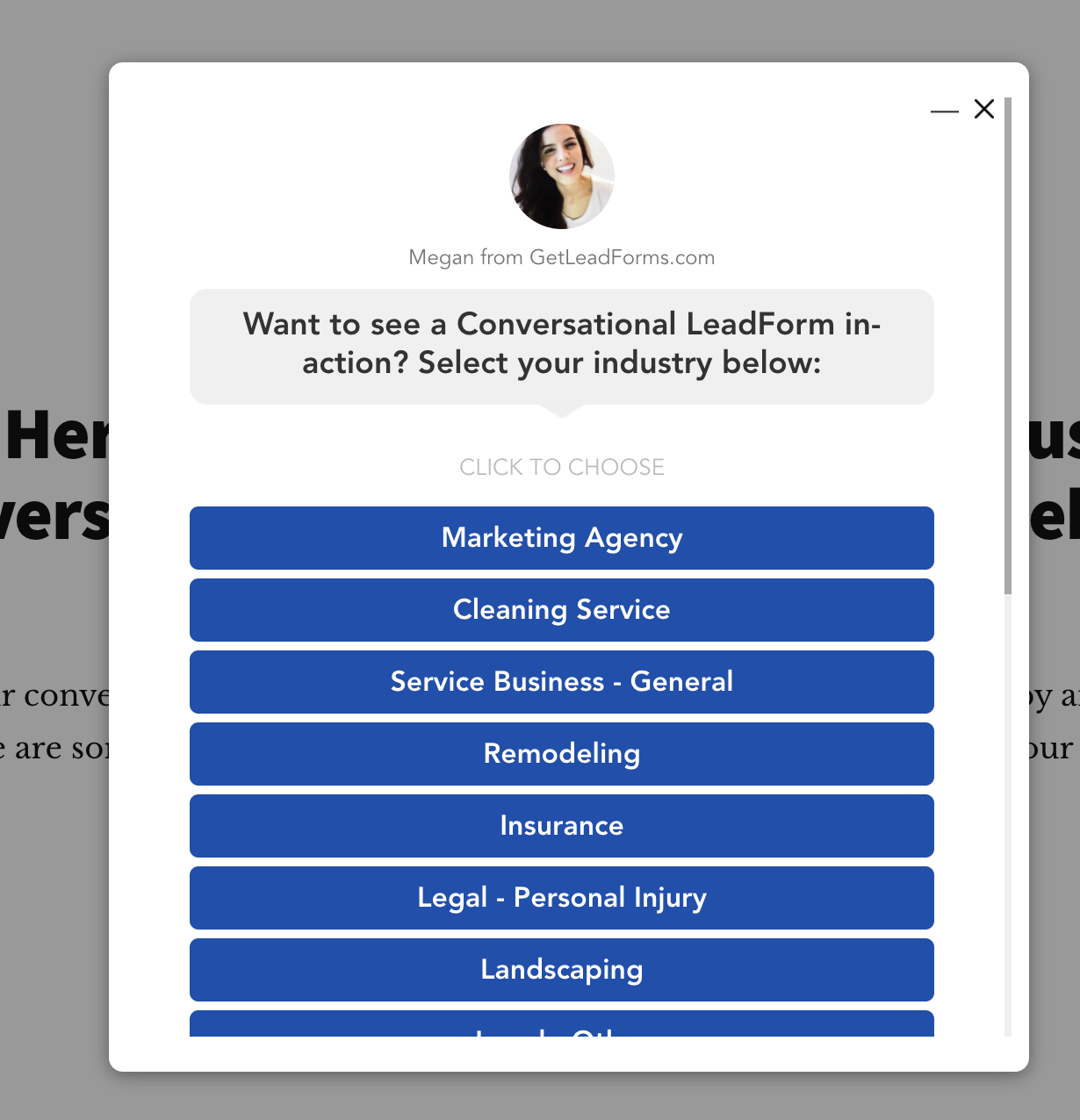
The above example drives the prospect to specific templates, rather than collecting their contact info.
And over the years, I have had requests for more customization options, like the ability to hide the image, add icons, or even change the background colors.
You can even setup your Conversational Form as an interactive form quiz, or survey form, like below:

You can see it in action here.
There’s almost no limit to what you can design with GetLeadForms. And we’re always adding more Conversational Form Templates.
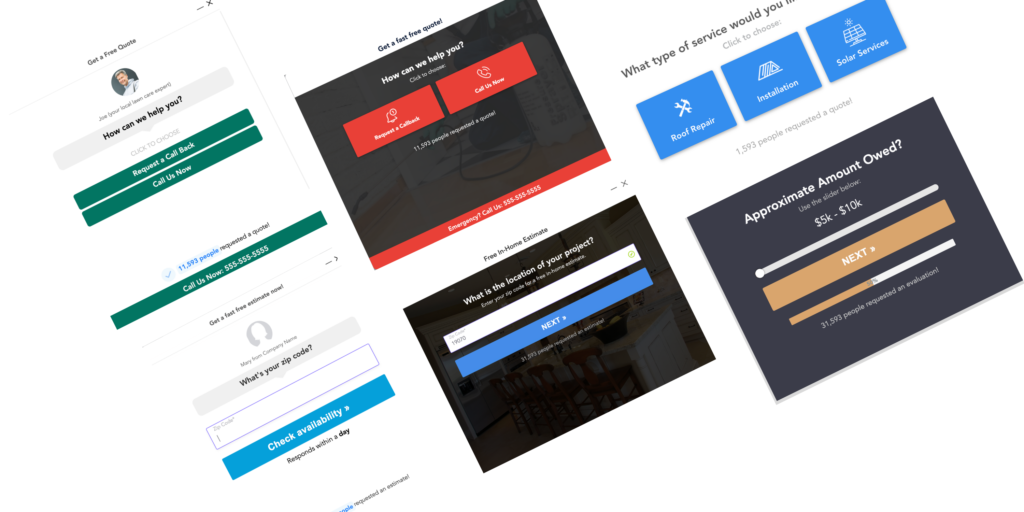
Let’s See An Example of a Conversational Form In-Action
Now that you know the story of how the idea of Conversational Forms came to life and have some examples, let’s look at a Conversational Form in-action on a website.
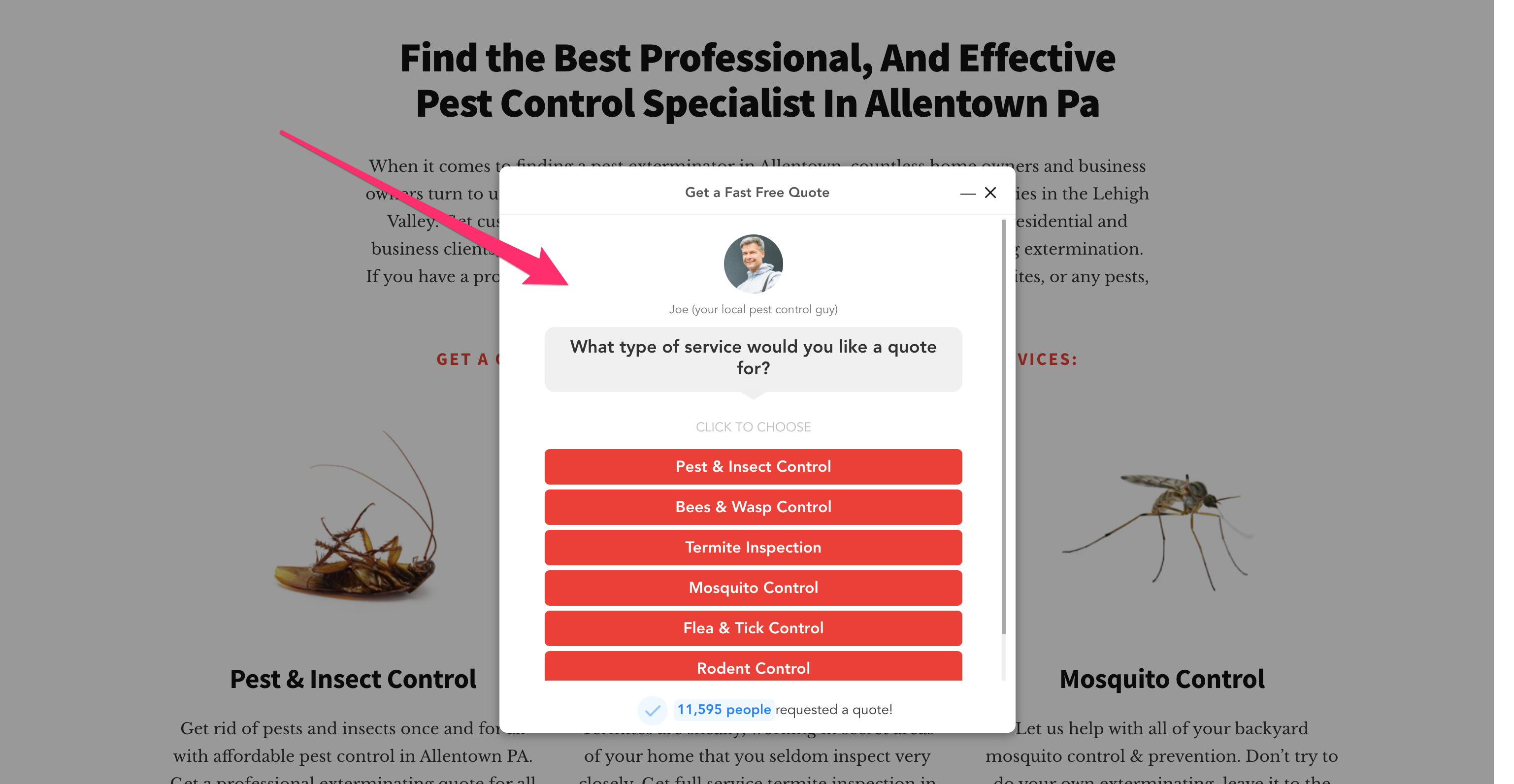
You can grab this exact template here.
As you can see, this is far more engaging and interesting than an ordinary form, engaging the visitor every step of the way.
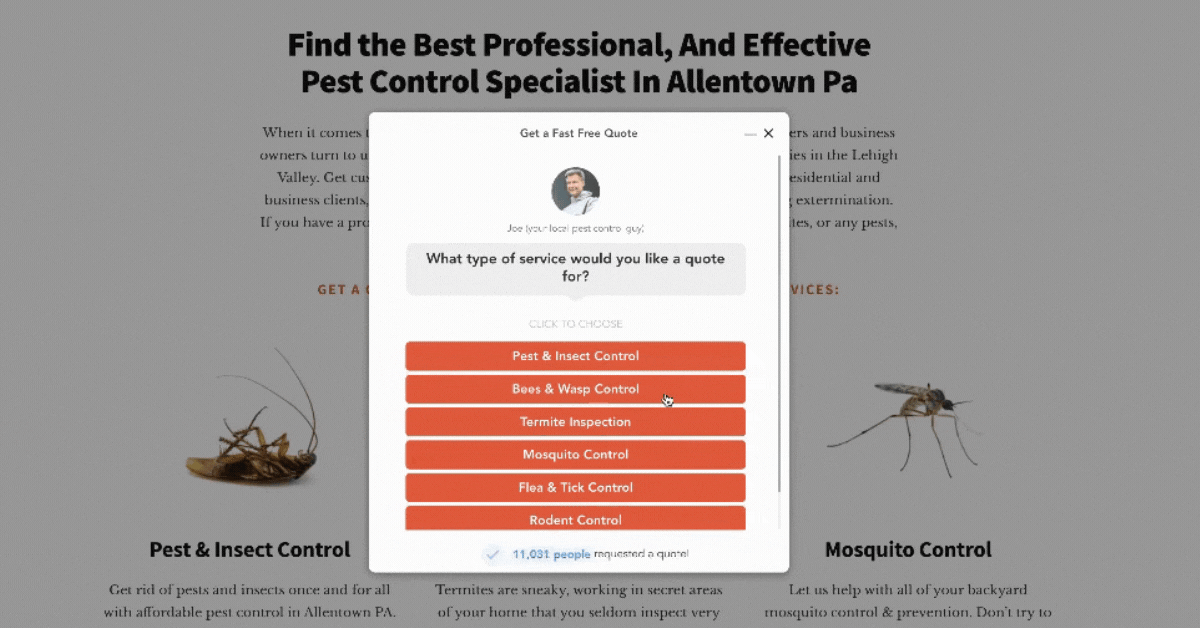
Even the copy is written in a more conversational, friendly tone.
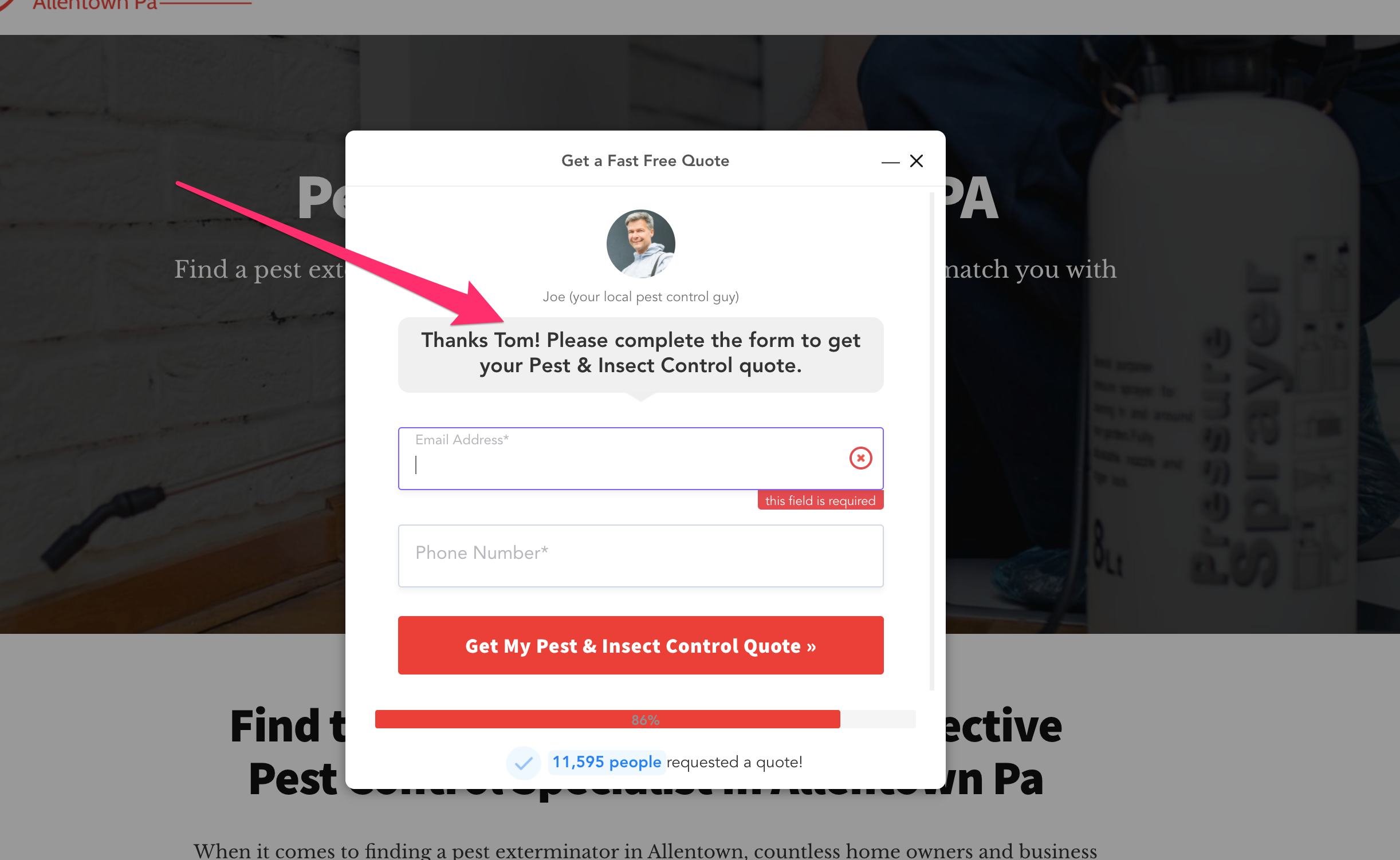
And it’s not just the form itself that’s worth highlighting, it’s also worth pointing out how the form is setup on the page.
To start, we have the Conversational Form opening from the click of the ‘Get a Quote’ button.
If you continue scrolling down the page then you’ll see that the onsite message is being used in the bottom right hand corner of the screen to engage the visitor as they scroll (note: this can be enabled or disabled)
And the Conversational Form is even embedded right into the page — which is way better looking than a traditional contact form.
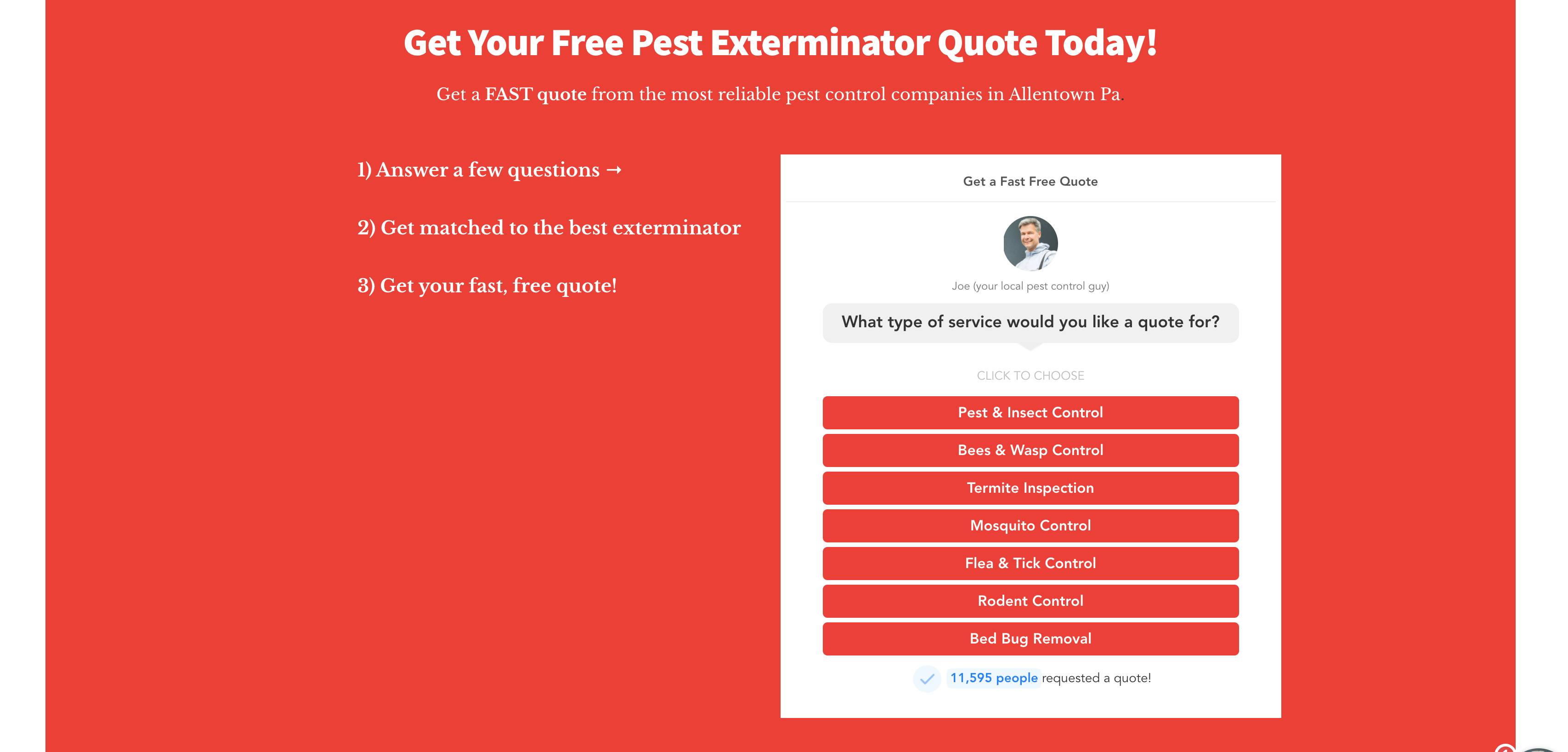
Here’s an example of an embedded conversational form.
The conversational form landing page that I showed you above is actually a page that I ran in Google Ads as a test. So yes, I spent actual money driving traffic to this form.
The results?
Here’s a screenshot from the GetLeadForms platform. One of the really cool things about building Conversational Forms with our tool is that we log all of the analytics. This Conversational LeadForm generated 543 leads and had a 5% conversion rate, which was a 150% increase, up from 2%.

A Conversational LeadForm is the perfect alternative to chatbots & live chat
There’s no denying that the Conversational LeadForms completely crushes the standard, ordinary form.
But what about chatbots and live chats?
Well, when it comes to capturing inbound leads, Conversational LeadForms have some clear advantages.
For starters, nothing is worse than when you engage with a chatbot and it breaks. Here’s a screenshot from an actual chat bot experience that I had awhile back.
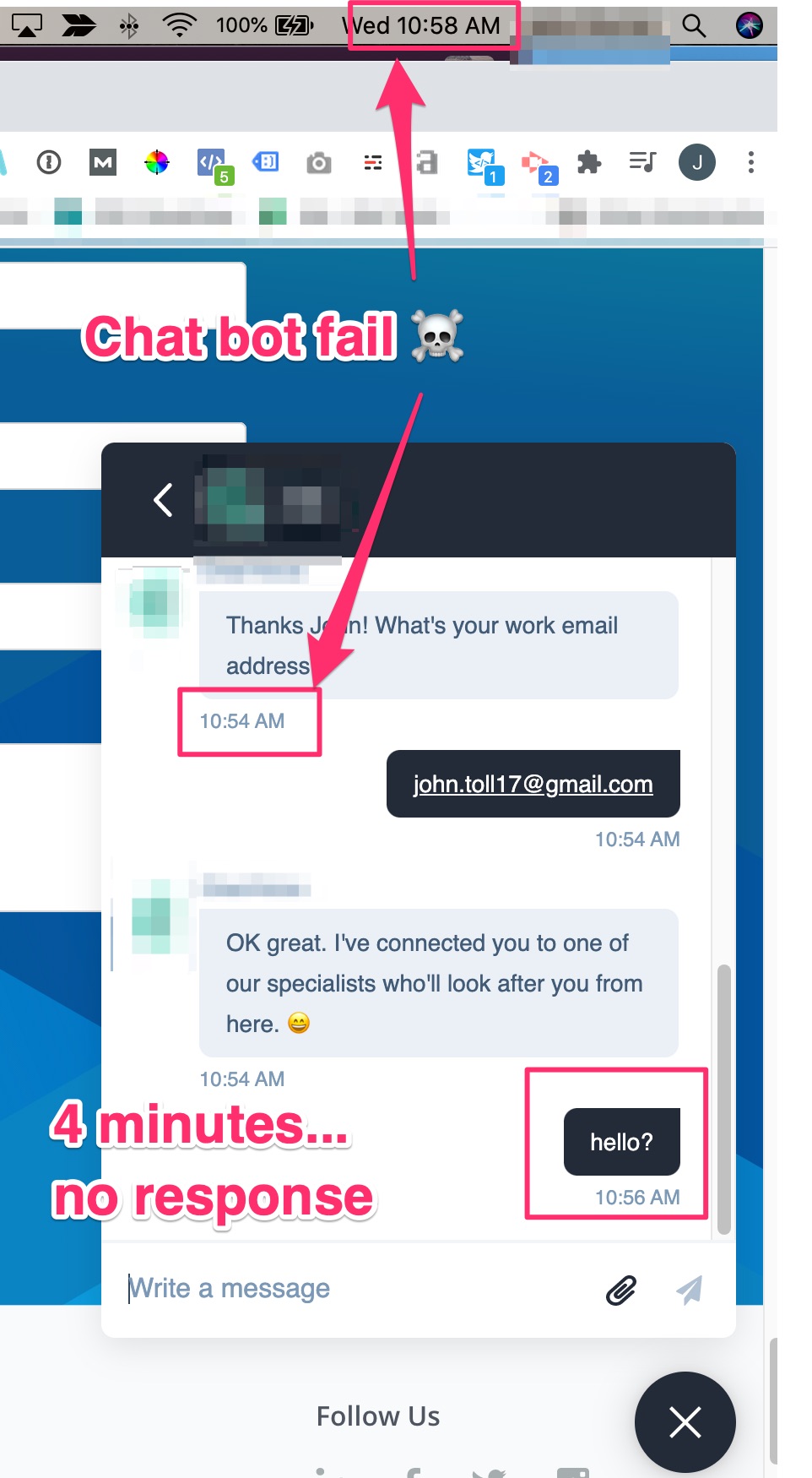
You can read the full chat bot fail story here.
Reasons why Conversational Forms are better than Chatbots:
- Chatbots are just glorified forms consisting of if/then statements wrapped in a fancy UI — there’s nothing that special about most chatbots
- People are getting tired of chatbots and the sometimes misleading experience that comes with them
- There are only a couple of chatbot companies that have won market share. Most chatbots feel the same and are running the same boring playbook.
- Natural language is complex, which makes it easy to break the chatbot.
- Poor chatbot experience may be costing your sales – here’s a story about how one company lost a sale because of a poor chatbot experience
- Over priced: I was recently pitched over $20K/year for a chatbot from a pretty well known chatbot company 🤯
What about live chat?
Don’t get me wrong, live chat can be great for lead capture.
But personally, unless I have a dedicated team I would never use a live chat for lead capture. It’s fine for larger companies with a dedicated sales rep, but for small business it’s just not a cost effective option.
Reasons why Conversational Forms are better than live chats
- Live chat usually take at least one rep to be available during business hours.
- Becomes costly when you factor in both software and time of staff to manage the live chat
- Can make marketing attribution a nightmare and reporting harding
- While responding fast to prospects seems like a great thing, it can make your sales team reactive, which leads to bad decisions
- Not practical for small businesses
- Requires a ton of pre-written scripts
At the end of the day, Conversational LeadForms (or Interactive Web Forms) have a clear advantage. The Conversational Lead Form is not only more cost effective, but it allows your team to respond on your own time
Benefits of Using Conversational Forms in Marketing
So at this point, you know our story and have seen some examples of Conversational Forms. Now let’s discuss some of the benefits of using Conversational Forms in your website, funnels and marketing campaigns.
- People-friendly: This is one of the biggest benefits. Unlike traditional forms, Conversational Forms are more human and build trust which is more important now than ever before.
- Increase conversion rates: When you combine the human-led experience with a multi-step approach, you have somer pretty powerful conversion software. Conversational LeadForms convert higher than any type of lead capture widget out there: This includes traditional forms, and chatbots combined.
- Better quality leads: AtGetLeadForms, we learned that when you approach your Conversational Forms as a conversation, asking one question at a time, you can actually ask your prospects more questions without sacrificing conversions. Ultimately, this ends up meaning better leads for you (or your clients).
- Increased form engagement: If you can increase the amount of people who see and engage with your forms, then you will more than likely increase leads. It’s that simple. The onsite message, timed, and exit popup features all help to increase form engagement.
- Better segmentation of leads for follow-up:One of the major benefits of using forms with multiple steps, like Conversational Forms is that you can easily send leads into your CRM and email systems for more segmented follow-up.
- Improved marketing ROI and CPAs: Optimizing the conversion rate of your forms gets you more leads, without having to spend more on marketing. This means that your down funnel CPAs and marketing ROI will be better in the long-run.
- Mobile friendly: X% of site traffic is usually coming from a mobile device. The number is probably higher if you’re using paid social channels. That’s why we focused on making Conversational Forms extremely mobile friendly.
- Easy to setup: Setting up a simple traditional form, can often be quite a challenge, depending upon which CRM or landing page builder that you’re using. And if you want to make that form a little dynamic, forget it. Conversational Forms can be setup in as little as 5-10 minutes and live on your site.
- Data & Metrics:One of the other huge benefits to Conversational Forms is that you can get a ton of data about your forms. This includes engagement rates, conversion rates, and even the drop-off rate of each step of your form. This way you know exactly where to optimize so you can get even more leads.
- Easy to manage, doesn’t require a team:Unlike chatbots and live chat, you don’t need a team to manage your Conversational Forms and you can respond on your own time, on your terms.
At the end of the day, conversational experiences can go a long way in converting prospects into leads and then customers.
How to create a Conversational LeadForm
Now that you know just about everything that there is to know about the Conversational LeadForm, let me show you just how easy it is to setup one of these forms for your website or landing page with our powerful conversational form builder.
Step #1: Create an account with GetLeadForms
First, you’ll need an account with GetLeadForms. You can grab your free trial right here. There’s absolutely no credit card required.
Step #2: Choose a template
There’s a famous saying out there that goes something like this:
“Don’t reinvent the wheel!”

To make things as easy as possible, we loaded a ton of free templates into your account to give you a starting point.

Simply browse the templates and select one that seems to fit your business.
Step #3: Update the design
Next, update the design of the form to match your website.
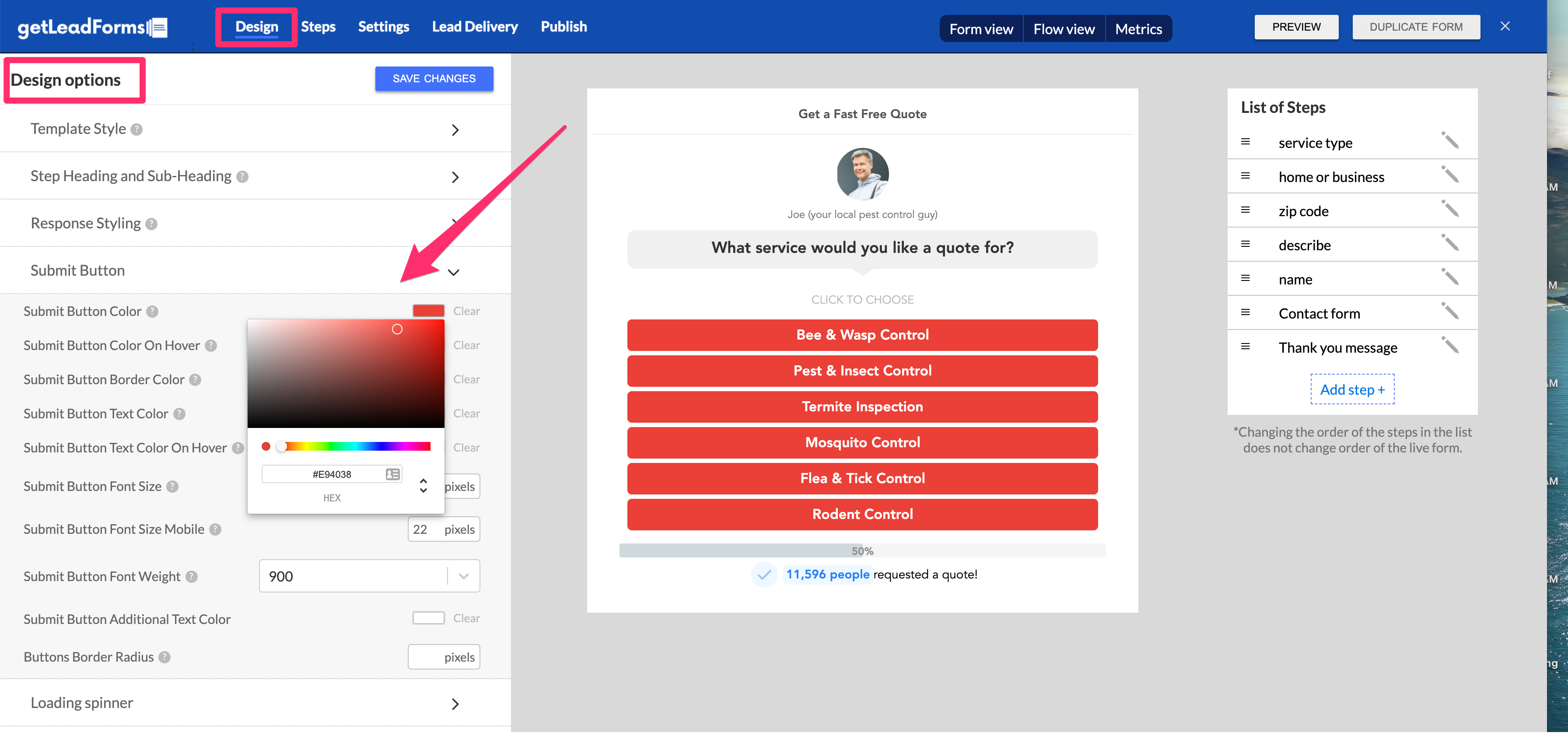
It’s easy as changing some of the button colors and dropping your image into the form.
Step #4: Adjust the steps and add form fields
This is where you’ll add the questions that you want to ask the prospect in your LeadForm.
Adding questions is simply a matter of clicking into a step and updating the information in the left hand panel.
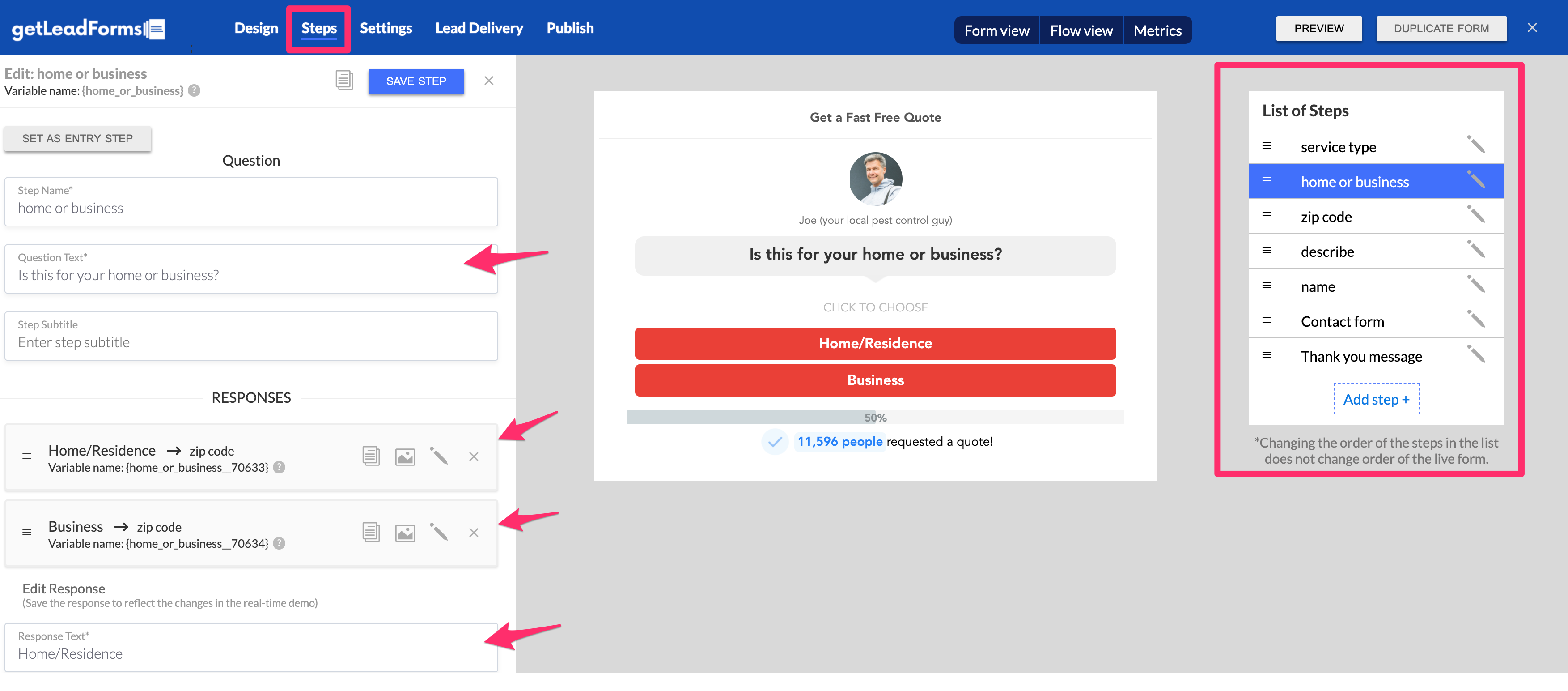
You can even see a flow view of how all of the steps connect.

Step #5: Tell the form where to send your leads
After you have your Conversational LeadForm all setup and it’s looking exactly the way you want it, tell the system where to send your leads.

Options include:
- SMS
- Post into your email system or CRM through a native integration (ActiveCampaign, Hubspot, Mailchimp, ConvertKit, Leadspedia, and more)
- Post into some other system with Zapier
- Webhook
Step #6: Add your Conversational LeadForm to your Website
Finally, tell us where you want your Conversational Form to appear. You can either have your LeadForm show up across all of your pages or specific landing pages.
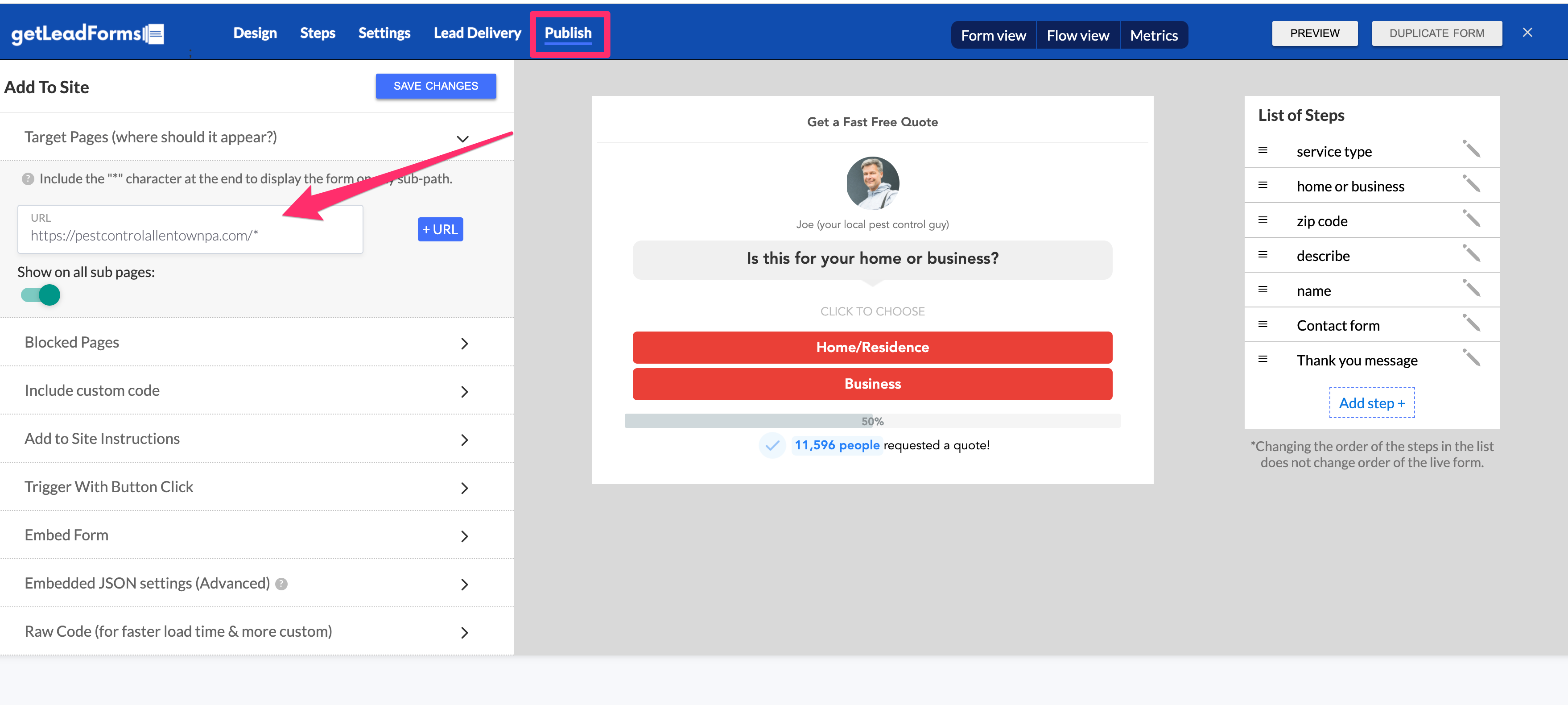
And you even have a ton of ways that you can add the Conversational LeadForm to your website:
- Timed or Exit Popup
- Click popup
- or Embedded right into the page
Just like that your Conversational LeadForm will be ready to go. If you start from a template then you should be able to get this setup somewhere between 10 minutes – 30 minutes, depending upon the complexity of your form.
Final Thoughts – The future of Conversational LeadForms
This is just the beginning…
It’s kind of funny saying that, considering that I’ve been working on this tool for over three years now.
But it’s the truth. I feel like we’re just getting started.
There are some big things in store for the future of Conversational LeadForms.
The future includes things like Artificial Intelligence, Chat Handoff, Heatmaps and more. I can’t give away too much info, but I can guarantee that there are some exciting innovations to come.
Here’s what to do next:
- Ready to get started? Start your free trial here.
- Want to see some templates first? Click here to browse our templates
- See how a leading digital marketing agency is using Conversational LeadForms to drive leads for their clients – read the case study

